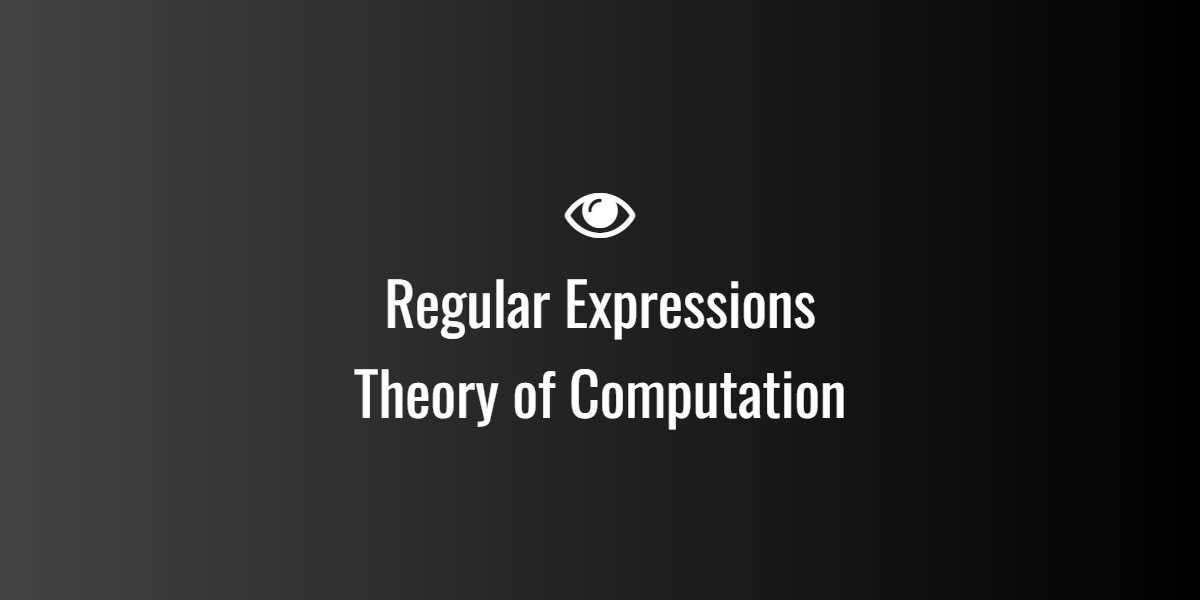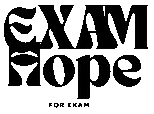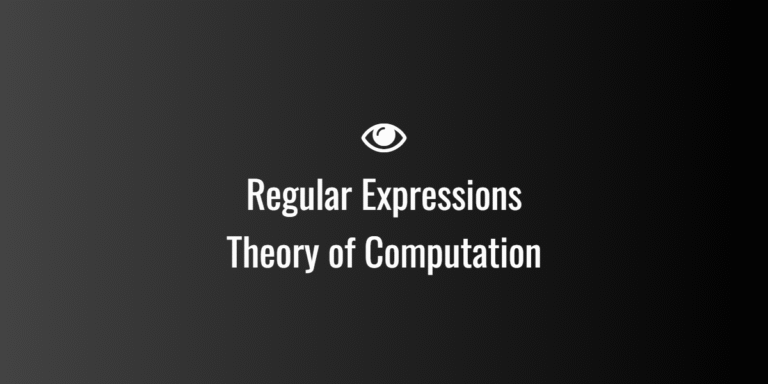
Regular Expressions Theory of Computation
⭐ A Simple Way to Think About Regular Expressions
If strings were people in a crowd, then a regular expression would be the person holding a sign that says:
“Only people who match this pattern may enter.”
It doesn’t list every string one-by-one.
Instead, it gives a short rule that covers thousands (or even infinite) strings at once.
⭐ Where you already use regular expressions (without realizing!)
- When you search something on Google
- When your phone filters contacts
- When you use “Find and Replace”
- When websites check your email format
All of this happens using ideas inspired by regular expressions.
So even though REs come from Theory of Computation, they are very practical.
⭐ What Regular Expressions Are Made Of
Regular expressions use a small set of building blocks.
Once you understand these, the whole topic becomes easy.
1️⃣ Symbols (a, b, 0, 1, etc.)
These represent themselves.
The RE “a” matches the string "a".
2️⃣ Union ( + )
Acts like “either this or that.”
Example:
a + b means “either ‘a’ or ‘b’.”
3️⃣ Concatenation
Placing symbols side-by-side means they appear in order.
Example:
ab means “first ‘a’, then ‘b’.”
4️⃣ Kleene Star ( * )
Means “repeat as many times as you want — even zero.”
Example:
a* matches:
ε, a, aa, aaa, aaaa, ...5️⃣ Parentheses ( )
Used to group expressions, just like in math.
⭐ A Few Friendly Examples
✔ Example 1
a*
Language: any number of a’s
ε, a, aa, aaa, ...✔ Example 2
(a + b)*
Language: all strings made of a’s and b’s in any order.
This describes Σ* for Σ = {a, b}.
✔ Example 3
a(b*)
Language: strings that start with an “a” and then have zero or more “b’s”.
a, ab, abb, abbb, ...✔ Example 4
(ab)*
Language: repeating “ab” pattern
ε, ab, abab, ababab, ...✔ Example 5
10(1 + 0)
Language:
- any number of 1’s,
- followed by a single 0,
- followed by any mix of 1’s and 0’s.
This is how compact REs can become!
⭐ Visual Diagram:
“How Regular Expressions Build Languages”
Here’s a simple diagram to show how a regular expression constructs strings:
+------------------------------+
| Regular Expression |
| (pattern or formula) |
+------------------------------+
|
v
+----------------+
| Generator |
| (rules for |
| creating |
| strings) |
+----------------+
|
v
+-----------------------+
| Language |
| (set of all strings |
| matching the pattern)|
+-----------------------+You start with a tiny expression, and from that tiny expression,
an entire language unfolds.
⭐ Why Regular Expressions Matter in Theory of Computation
Regular expressions, DFAs, and NFAs are three different ways of describing the same kind of languages — the regular languages.
- A DFA recognizes the language.
- An NFA also recognizes the same language.
- A regular expression describes the same language.
So in theory, these three are equivalent.
REs are like the written description,
and automata are like the working machines.
⭐ A Small Analogy to Make It Memorable
Think of a regular expression like a recipe:
- It doesn’t cook the food itself.
- It simply tells you how to make it.
A finite automaton is the actual chef following the recipe.
Both lead to the same dish —
the dish here being the language.




